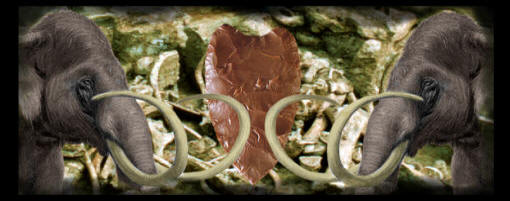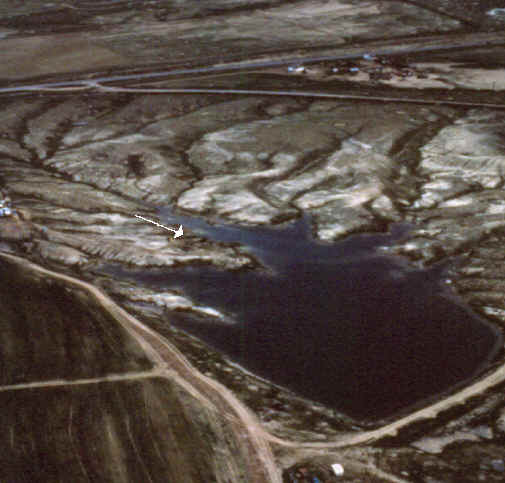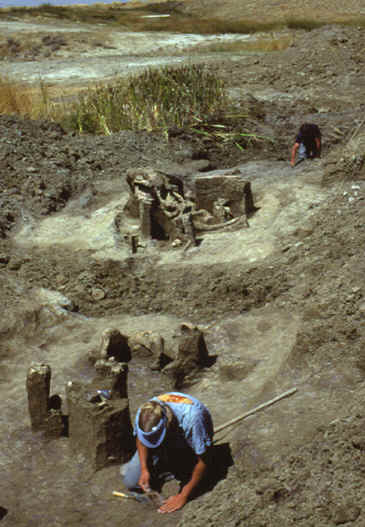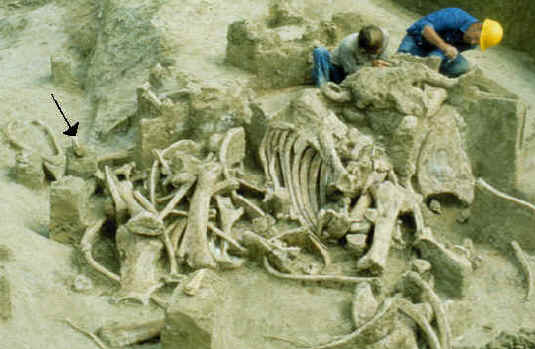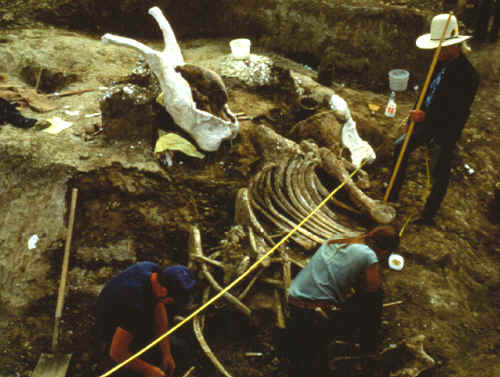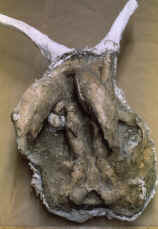|
|
|
|
|
|
ABSTRACT
The Colby site is located on private property in north central Wyoming in the Bighorn Basin.
This important site was named after Donald Colby who discovered the first
Clovis spear point there in 1962. Mr. Colby found it while using heavy
earth moving equipment during the construction of a reservoir. The Colby site was first recognized
as an important archaeological site in 1973 when the first scientific
excavations began to take place there. Most of the site was
excavated during five separate digging seasons between the
years 1973 through 1978.
The Colby site is located at the edge of an artificial reservoir just east of the Bighorn River within the interior of the Bighorn Basin. The elevation of the site is approximately 4,000 feet.
The excavation of the third fairly small bone concentration was located between two much larger bone piles. The mammoth bones in this picture consists of a cranium, mandibles, two femora, several ribs, several vertebrae and foot bones. There were no artifacts found in association with these bones.
Bone pile number 2 was discovered during a test excavation in the fall of 1973. The arrow in this picture is pointing to a broken camel radius that is not believed to have been associated with the main bone bed. It's theorized that it may have been deposited there by water flowing through this ancient arroyo where the 7 mammoths were killed and butchered by Clovis hunters. Several artifacts were found in bone pile number 2. A small red Clovis point, 18 resharpening flakes, a large granite water worn rock used as a chopper, a sandstone abrader, and two bone fragments thought to have been used as tools.
The highest element (bone) excavated from bone pile number 2 was a
mammoth skull. This skull had previously been exposed by reservoir
construction several years earlier.
Special care was taken to remove the fragile mammoth bones. Just as paleontologist transport their fossilized bones, archaeologist must also enclose their more recent mammoth and mastodon bone in plaster jackets. Note the steel reinforcement rods supporting the tusks and the chain hoist to lift the great weight. BONE PILE NUMBER 1 Bone pile number 1 contained 16 artifacts. The most notable were two Clovis points. One was fairly large but was missing the tip of the point. If it were complete it may have been about 4 inches long. Another smaller extensively resharpened Clovis point measures about 2 1/2 inches long. There were 12 resharpening flakes and one larger percussion flake found which indicates they were probably altering the edges of their tools as the butchering process progressed. A process comparable to the way we would sharpen a steel knife today when it gets dull. Also found in bone pile number 1 was a small water worn rock (boulder) that had been split and the resulting working edge had been dulled from excessive pounding.
|
|
| CONTINUE TO PAGE 2 | |
|
"REFERENCES"
|
|
